VALORANT Abyss Map – A Competitive Analysis
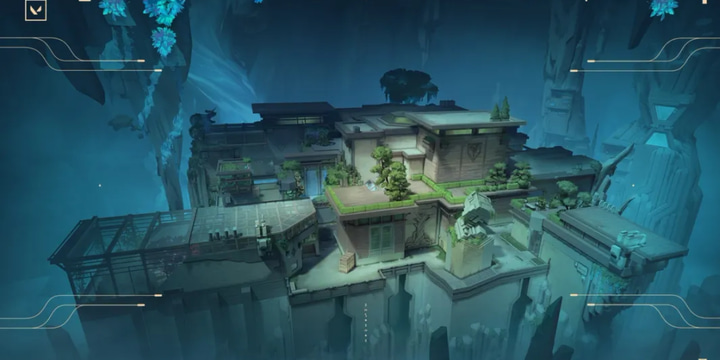
One of the best things about VALORANT are the consistent content updates. Every few months you either get new agents (check: Valorant New Agent Clove), skins, or new maps. This time, it’s a new map: Abyss. VALORANT maps have always been well-accepted by the community. It is mostly because they are balanced and unique from one another.
Abyss is the 11th map in VALORANT’s map roster. The map has a lot of unique features and is open to a lot of different strategies. VALORANT maps have always been open-ended for players to try different team comps and strategies on and Abyss is no exception. In this article, we will be doing a complete analysis of Abyss, discussing the layout of the map, possible attack/defense strategies, team comps, and how it will perform in VALORANT esports and ranked (check: VALORANT Ranks Explained).
Click here to see the VALORANT Abyss map trailer on VALORANT’s Youtube channel.
The Map and Its Layout
At first glance, Abyss looks like a standard three-lane map. That’s actually true. Much like most VALORANT maps, Abyss has a middle, A site, and B site. But, even with the similar layout, Abyss is a completely different map. Firstly, this map has the most verticality out of all VALORANT maps. There are lot of hidden and off-angles you have to clear, and a lot of choke points to push through.
But, the most striking feature of the map is the fact that it has no boundaries. All VALORANT maps up to this point have hidden barriers on the edges, preventing players from falling off. Abyss doesn’t have them. There are no barriers around the maps, so essentially you could just fall off and die. Or better yet, push your enemy to their deaths. While falling to death is one thing, the lack of barriers opens the doors to a lot of different plays.
Agents like Raze, Omen, and Jett can use their abilities to move easily from corners to sites and other angles. This also opens the gate for clever lineups and utility usage.
As for the layout of the map; as we mentioned Abyss is a three-lane map. This includes a middle, A site, and B site. We’ll go over each below and their layouts.
Middle
The middle section of Abyss is one of the most unique parts of the map. It’s very narrow and there are two lanes that connect both spawns together. One of the lanes is higher and connects to A through a breakable door. The other sits lower and connects to both spawns and B site. Both the lanes are separated by gap. If you fall into this gap, you will die.
Middle is going to be the Operator zone due to the long sightlines. Additionally, because the middle is so narrow, you will also face a lot of utility like nades and flashes. Overall, middle is going to be a very chaotic place to take control of.
Speaking of control, taking mid control is going to be essential for winning on Abyss. The middle directly connects the spawns together. If you don’t take control of middle, your team is going to be split between both sites and you will be destroyed easily.
You can take a look at the image below to see how taking control of middle can open up a lot of opportunities to sandwich and flank the other team.
There are a lot of ways to take control of Mid. You can set up a player with an Operator or use information utilities like Cypher’s Tripwires, for example.
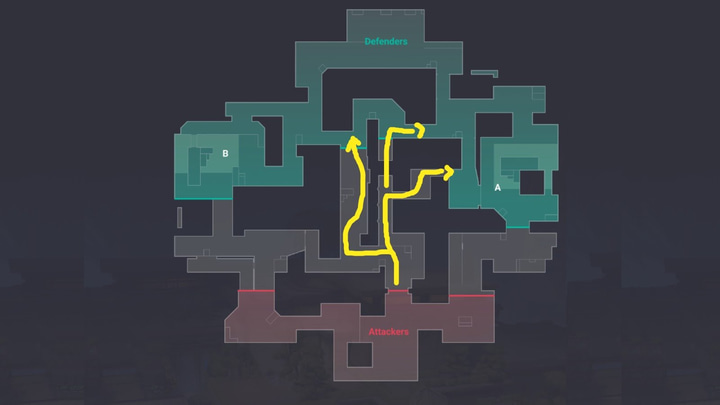

Attacker side mid

The two lanes
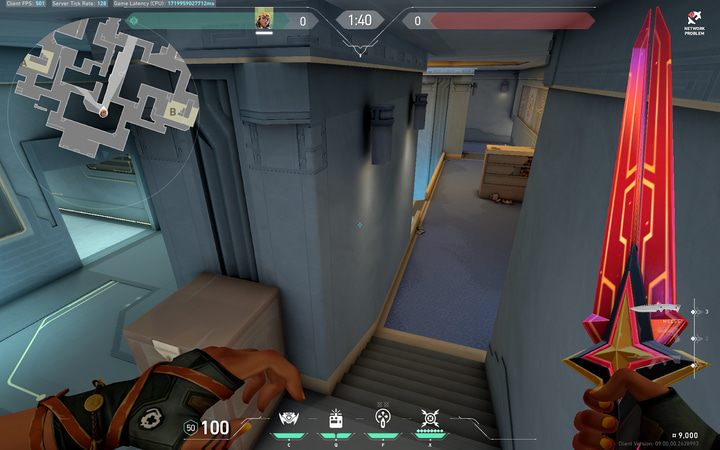
Defender side mid
B Site
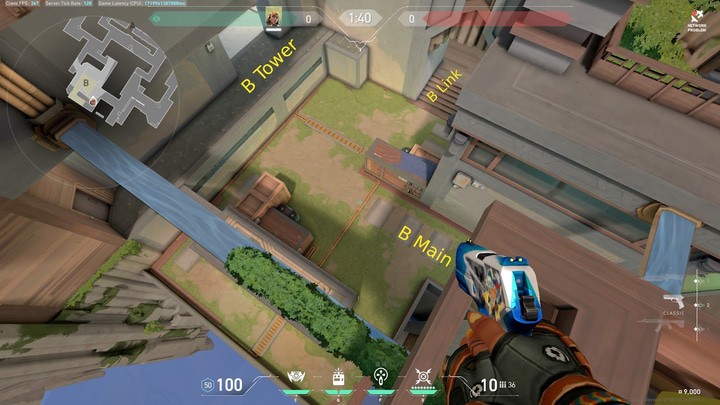
The structure of the B site is pretty standard. You have a narrow entry point for the attackers called B Main, a connecting route from middle called B Link, and a vertically high point called B Tower, which will probably be called B Heaven by the players. The site has a huge container on the left with boxes for cover. Overall it’s a pretty standard site. One important thing to note is that, because there are no barriers, agents with mobility can enter the site from outside of the map and skip B Main entirely. Plus, there is a little bridge at the edge of the start of B Main that gives an alternate route to the site

A Site
Similar to B site, A site is also quite standard layout-wise. The attacker’s entry point is called A main, defenders enter from A security. A tower is a vertical point that also connects to the middle through a breakable door. There is a rectangular box in the middle to provide some cover and a dangerous bridge on the edge of the site. You can plant the bomb there which is going to be extremely difficult for defenders to defuse. You can also knock people off this bridge using Raze satchels or other utilities.
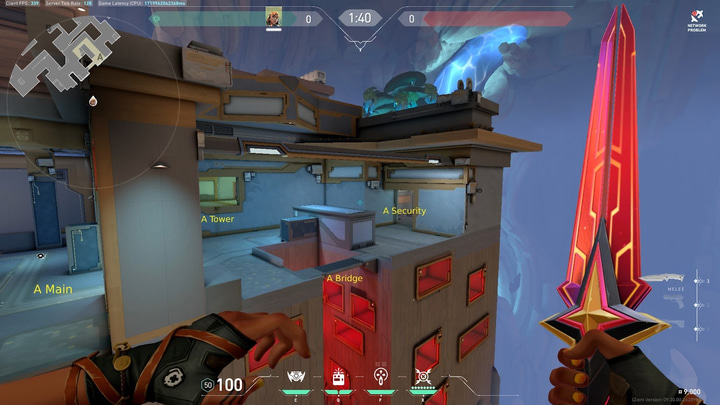
Strategies
Let’s dive into how a round will go on this map and explore some attack/defense strategies to help you out.
Attack
This map will encourage a more aggressive style of play. Since the map is open and the choke points are not that narrow, you can get a lot of rounds just by performing a good rush. However, it’s also easier to be retaken by the defenders. The key to performing well on this map is taking mid control. Denying the Defenders access to mid will open up a lot of different plays for you. You can go for a flank or a split execute on the A site. Plus, holding onto mid will also make it harder for the players on the other site to rotate back.
The other thing that will be very successful is using mobility agents like Raze and Jett to enter the site from outside of the map. There are also a lot of vertical points on this map so mobility agents are going to be very good in general.
Defense
Defense works the same as attack. There is an emphasis on aggressive play. Abyss is all about taking early map control, so going on the offensive early in the round will be beneficial. Again, taking control is also key here. By taking mid control, you will be limiting attack options for the Attackers and they will only have the option to push through the main entry points of sites.
For the sites, you need to have a sentinel on your team like Cypher. He is currently one of the best sentinels in the game, so having him on your team will work. Other sentinels are a good option as well. The main thing to do is to use Sentinels to lock down at least one of the sites. This combined with good mid control will further reduce Attackers’ options.
Agents for Abyss
Obviously, team comp is a matter of personal preference. After all, it’s the strategies you use that win the game. However, certain agents will go very well with this map. For Duelists, Raze and Jett are a must. You can have both or at least one of them in your team. Mobility is a big part of Abyss and the agents who can abuse it are going to be very good.
For Sentinels, Cypher, Sage, and Chamber are going to be the top picks with Cypher being the best. All these agents can lock down angles and sites, making it easier to focus on other sides of the map. Chamber can be really handy for controlling Mid since he is a good operator agent. Sage can wall off sites or use the wall for vertical mobility.
For the controllers, we highly recommend Omen. His mobility is going to be really beneficial for the team. You can also go for Viper as a second controller/sentinel. This is a large map so a two-controller comp will also work quite well.
Finally, for initiators, Fade and Sova are top picks for information, and Breach for flashes and site control.
Conclusion
This is just an initial view and analysis of the map. VALORANT esports is really unpredictable and teams can come up with very creative strategies. The meta for this map will become clearer as the map is played in ranked and esports. Overall, Abyss is a solid addition to the game and it’s a fun map to play. Just watch your step while playing this map.


